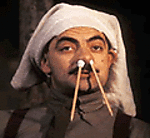You've strarted a page crammed with tips there pal. The missing linx articles were stops on, I wonder if Mig will continue to publish these little 'tit-bits'
thanks
Stuart
AFV Painting & Weathering
Answers to questions about the right paint scheme or tips for the right effect.
Answers to questions about the right paint scheme or tips for the right effect.
Hosted by Darren Baker, Matthew Toms
Finishing and Weathering Sequence

Beaver2206

Joined: November 03, 2007
KitMaker: 61 posts
Armorama: 56 posts

Posted: Monday, November 30, 2009 - 07:56 AM UTC
southpier

Joined: December 11, 2009
KitMaker: 546 posts
Armorama: 316 posts

Posted: Friday, December 25, 2009 - 02:32 PM UTC
maybe too specific for this topic, but i feel guity starting another for what i think must be a simple answer (although i don't know what it is!).
when using a photo etch dashboard, and mounting the gauges & clear acetate, when do i paint? or put it all together and somehow mask the gauges?
thanks
when using a photo etch dashboard, and mounting the gauges & clear acetate, when do i paint? or put it all together and somehow mask the gauges?
thanks
Pyromaniac

Joined: January 10, 2009
KitMaker: 375 posts
Armorama: 362 posts

Posted: Saturday, December 26, 2009 - 05:46 AM UTC
Difficult to tell without pics, but i think i know what you mean. People have achieved great effect (often on aircraft cockpits) by painting the basecoat on and then carefully dry brushing white over the top to highlight the detail. That's the best i can reccomend, so i hope this is applicable.
Posted: Saturday, December 26, 2009 - 07:40 AM UTC
can you link to what you use as "acrylic clear flat"? for the gloss part i use future, but i have no idea as to what use at this step (something by tamiya? vallejo?)
also, after the model is done should i spray it with something like vallejo's matt varnish?
also, after the model is done should i spray it with something like vallejo's matt varnish?
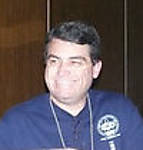
SSGToms

Joined: April 02, 2005
KitMaker: 3,608 posts
Armorama: 3,092 posts

Posted: Saturday, December 26, 2009 - 08:50 AM UTC
Quoted Text
maybe too specific for this topic, but i feel guity starting another for what i think must be a simple answer (although i don't know what it is!).
when using a photo etch dashboard, and mounting the gauges & clear acetate, when do i paint? or put it all together and somehow mask the gauges?
thanks
Mount the gauges and acetate in the decal stage, but be sure to mask them when applying flat coat. Flat coat will frost clear parts.

SSGToms

Joined: April 02, 2005
KitMaker: 3,608 posts
Armorama: 3,092 posts

Posted: Saturday, December 26, 2009 - 08:56 AM UTC
Quoted Text
can you link to what you use as "acrylic clear flat"? for the gloss part i use future, but i have no idea as to what use at this step (something by tamiya? vallejo?)
also, after the model is done should i spray it with something like vallejo's matt varnish?
Excellent flat clear acrylic is made by Pollyscale, MM Acryl, and Vallejo.
I make my own flat clear with 3 parts Future and 2 parts Tamiya X-21 flat base.
If you finish your model with a flat clear, it will darken the pigments and negate their dusty look.
Posted: Saturday, December 26, 2009 - 10:00 AM UTC
so should I use something like vallejo's satin / gloss varnish for that step?

SSGToms

Joined: April 02, 2005
KitMaker: 3,608 posts
Armorama: 3,092 posts

Posted: Saturday, December 26, 2009 - 10:08 AM UTC
Quoted Text
so should I use something like vallejo's satin / gloss varnish for that step?
No, I'm saying that I don't put anything over my pigments at all. My only step after pigments is to mount the model on a base so that no fingerprints get on the model and pigments.
Posted: Saturday, December 26, 2009 - 10:53 PM UTC
roger that 

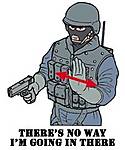
spoons

Joined: January 09, 2008
KitMaker: 527 posts
Armorama: 500 posts

Posted: Saturday, December 26, 2009 - 11:35 PM UTC
Hello im a bit old school...
1)halfords primer
2)tamiya acrylic or enamels
3)lighten tamiya acrylic or enamels
4)filters/washes and dry brush!
5)Jhonsons floor
6)markings decals,rubs etc
7)polyuraphane gloss varnish(white spirit based)
 pin wash/smoke dirt stains detail painting
pin wash/smoke dirt stains detail painting
9)silk then matt varnish (white spirit based)
10)pigments
still cant get away from enamels.The final matt varnishing is not uniform just around lower hull i dont use these as rules just guides they can be messed around a bit to get the desired look.
1)halfords primer
2)tamiya acrylic or enamels
3)lighten tamiya acrylic or enamels
4)filters/washes and dry brush!
5)Jhonsons floor
6)markings decals,rubs etc
7)polyuraphane gloss varnish(white spirit based)
 pin wash/smoke dirt stains detail painting
pin wash/smoke dirt stains detail painting9)silk then matt varnish (white spirit based)
10)pigments
still cant get away from enamels.The final matt varnishing is not uniform just around lower hull i dont use these as rules just guides they can be messed around a bit to get the desired look.
southpier

Joined: December 11, 2009
KitMaker: 546 posts
Armorama: 316 posts

Posted: Sunday, February 14, 2010 - 03:09 PM UTC
not wanting to start a new thread, so this may be a touch off topic:
coming from a model car/ model railroad background, i have been in the habit of completing as much/ many sub-assemblies (including paint & details) as possible before final construction.
from what i can glean from military model magazines, it seems assembly is substantially complete before any finishing is begun. is this just the way editorializing works, or is it common to build almost to the end before the paint & weathering takes place?
is there a good source of "finishing philosophy" available? not necessarily a painting how-to, but the reasoning behind the sequence.
thanks
coming from a model car/ model railroad background, i have been in the habit of completing as much/ many sub-assemblies (including paint & details) as possible before final construction.
from what i can glean from military model magazines, it seems assembly is substantially complete before any finishing is begun. is this just the way editorializing works, or is it common to build almost to the end before the paint & weathering takes place?
is there a good source of "finishing philosophy" available? not necessarily a painting how-to, but the reasoning behind the sequence.
thanks
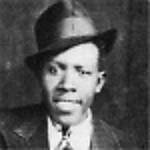
muchachos

Joined: May 21, 2008
KitMaker: 537 posts
Armorama: 439 posts

Posted: Sunday, February 14, 2010 - 04:29 PM UTC
Southpier, do whatever you feel comfortable with. I used to build everything but tools, wheels, tracks, then paint, but now that I have gotten more confident with the steadiness of my hands, and gotten an airbrush, I have started assembling pretty much everything (apart from tracks in some cases) then painting. Some like to paint tools separately, but I generally paint them on the vehicle. Painting when all is assembled allows a better effect for shading - I basecoat in black, and it prevents ugly glue stains that are a complete pain in the ass to clean up. Anyway, unless you are building a parade ground vehicle, it isnt going to matter whether or not your rubber tires are perfect.  Dust and mud. Repeat if necessary
Dust and mud. Repeat if necessary  And I'm only half joking!
And I'm only half joking!
Here is an alternate painting and finishing order - taken from someone on Missing Lynx, cant remember who.
 Dust and mud. Repeat if necessary
Dust and mud. Repeat if necessary  And I'm only half joking!
And I'm only half joking!Here is an alternate painting and finishing order - taken from someone on Missing Lynx, cant remember who.
Quoted Text
Here is a rough outline of steps. Keep some steps flexible, because not every model adheres to a strict guideline, and some techniques will dictate other steps in a certain order (ie. the relatively new hair spray method).
1) Primer
2) Base coat (acrylic preferably), you can pre-shade prior to if you want
3) Camo (if applicable)
3a) Color modulation (if applicable)
4) For hair spray - seal, use hair spray and then top coat of white, etc.
4a) chip and scrub off hair spray (if applicable)
5) markings
6) seal decals if necessary (I use spray templates as masks as much as possible with armor)
7) detail painting such as tools, rubber tires, tracks, etc.
8) pin wash (w/enamels) around molded detail, color should be neutral brown/gray mix depending on color scheme
9) oil paint fading or airbrush post-shading, or a mix of the two (this step can be moved around a little)
10) chips and scratches with thinned acrylic vis small brush, or sponge
11) filter - overall to unify the scheme and basic effects
12) more oil paint fading if applicable for extreme examples, or rain streaks
13) any details that need fresher colors like exhaust and periscope glass can be hit again
14) pigments for chassis and tracks
15) pigments for hull areas and turret
16) detail washes, darker colors for hatches, etc.
17) redo any chips to be newer looking, (if applicable)
18) oil and fuel stains on wheels and engine, or service areas
19) graphite for edges, hatches, MG's, etc. (if applicable)
20) another layer of dark pin washes just for primary examples like engine hatch areas
21) re-layer chips, scratches, pigments, pin washes, oil paint staining, etc. for final look and effects
I usually jumble around the last 6-7 steps as I see fit, many times repeating the steps over again until the desired results are had. You can be really strict and do the order in the way it happens in real life (like you theorized on the other DG), but this will take time and proper planning, and not all products play along as you'd like. Such as I prefer stains on top of dust pigments, but too much thinner might give a different result than intended. It honestly takes a lot of patience and practice to fully realize the potential in each step, so some models will be more to your liking than others. The theater and levels or dirt applied will make a lot of difference to what you can and cannot do to it.
I also often practice on smaller OOB kits to keep fresh and stay current. If I was you I'd get a Tamiya 1/48 Porsche Tiger II and play around with the finish before I really committed my efforts to the 1/16 kit camo and weathering, you be surprised at some results. A not-often talked about subject, but something that can save a model from disaster, more than some guys think. Practice like music and golf, you can never do too much.
Removed by original poster on 03/13/10 - 15:58:20 (GMT).

doppelganger

Joined: March 09, 2010
KitMaker: 557 posts
Armorama: 217 posts

Posted: Saturday, April 03, 2010 - 08:03 AM UTC
I taped this info to my workbench next to reference from nigel julian  you guys rock! thanks for help.
you guys rock! thanks for help.
 you guys rock! thanks for help.
you guys rock! thanks for help.dasfrandsens

Joined: May 06, 2008
KitMaker: 6 posts
Armorama: 1 posts

Posted: Wednesday, June 23, 2010 - 07:47 AM UTC
Hi Matt,
Great insights and tips. I had a question. Do you know about using a spounge fpor finishing touches? Like with a thin solution, stipling effect. Metal showing thru?
Hope I am making sense.
Anyway what kind of spounge...if you know? Thanks
Sincerley
SGT Frandsen
2-502 INF Bat 101 Div
Great insights and tips. I had a question. Do you know about using a spounge fpor finishing touches? Like with a thin solution, stipling effect. Metal showing thru?
Hope I am making sense.
Anyway what kind of spounge...if you know? Thanks
Sincerley
SGT Frandsen
2-502 INF Bat 101 Div

SSGToms

Joined: April 02, 2005
KitMaker: 3,608 posts
Armorama: 3,092 posts

Posted: Thursday, June 24, 2010 - 01:58 PM UTC
HI Don,
Yes, I do chipping and stippling with sponges a lot. I use two applicators - a piece of Scotchbrite green scrubby pad is good for large scratches and chips. A piece of open cell foam pad, like the kind in electronics packing, or a piece of disposable foam sponge brush is great for tiny chips and stippling lighter colors for fading and wear.
Acrylic paints work best for this as they dry quickly and can make very small marks. Dip the piece in paint, dab it on a rag to remove most of the paint, and gently, quickly and randomly dab at the model. You can build up the effect and make sure not to go overboard with it.
I like Tamiya NATO Black for dark steel chips and Tamiya hull red for primer chips. Experiment with different colors and dabbing speed on a junk model until it's coming out how you want.
Yes, I do chipping and stippling with sponges a lot. I use two applicators - a piece of Scotchbrite green scrubby pad is good for large scratches and chips. A piece of open cell foam pad, like the kind in electronics packing, or a piece of disposable foam sponge brush is great for tiny chips and stippling lighter colors for fading and wear.
Acrylic paints work best for this as they dry quickly and can make very small marks. Dip the piece in paint, dab it on a rag to remove most of the paint, and gently, quickly and randomly dab at the model. You can build up the effect and make sure not to go overboard with it.
I like Tamiya NATO Black for dark steel chips and Tamiya hull red for primer chips. Experiment with different colors and dabbing speed on a junk model until it's coming out how you want.
ebergerud

Joined: July 15, 2010
KitMaker: 297 posts
Armorama: 164 posts

Posted: Thursday, July 15, 2010 - 07:21 AM UTC
Quoted Text
1) Acrylic camo paint
2) Acrylic clear gloss
3) Decals or dry transfers
4) Acrylic clear gloss
5) Overall oil washes
6) Acrylic clear flat
7) Oil panel washes (filters)
8) Oil pin washes
9) Oil drybrushing
10) Oil staining (dot method)
11) Chipping and scuffing
12) Pigments
13) Mount to base so nobody touches the pigments
Sure not going to quibble with my betters. But there's something in the why's that I don't quite get. As I understand it one of the reasons to do step 5 is to create a kind of "moist" look. (I'm following more or less the same sequence on a ship and it certainly does that.) However, if you follow it with 6 (acrylic flat) isn't that going to negate some of the impact of the overall oil wash?
Thanks
Eric

SSGToms

Joined: April 02, 2005
KitMaker: 3,608 posts
Armorama: 3,092 posts

Posted: Sunday, August 29, 2010 - 11:01 AM UTC
An oil wash is to put thinned oil paint of a darker color into all the panel lines and recesses. This is to add depth to the details. It is supposed to dry to a flat finish.
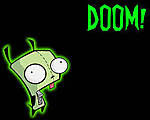
jzumbro

Joined: August 27, 2010
KitMaker: 100 posts
Armorama: 76 posts

Posted: Monday, September 06, 2010 - 06:41 AM UTC
I love this thread! First timer question:
How long do you have to let an oil wash set up before applying the next coat of Future..seems like even thinned oils could take weeks to months to set up?
Same question for Acrylics or Enamels..how long to let them set up before Future application?
And...I don't have an airbrush..can I just brush the Future on with a brush instead-as a thin coat I assume..? What would I use to then clean the future off the brush?
Muchas Gracias..
How long do you have to let an oil wash set up before applying the next coat of Future..seems like even thinned oils could take weeks to months to set up?
Same question for Acrylics or Enamels..how long to let them set up before Future application?
And...I don't have an airbrush..can I just brush the Future on with a brush instead-as a thin coat I assume..? What would I use to then clean the future off the brush?
Muchas Gracias..

SSGToms

Joined: April 02, 2005
KitMaker: 3,608 posts
Armorama: 3,092 posts

Posted: Monday, September 06, 2010 - 07:56 AM UTC
If you thin your oils with mineral spirit to make the wash, it will usually dry overnight in an air conditioned room. Give it about 3 days before putting a clear coat over it though. For an acrylic or enamel paint job, again, give it about 3 days to cure before you seal it.
If you don't have an airbrush, you can carefully brush on Future with a wide flat brush. I've done that myself back in the old days.
Clean future from the brush with Windex, or ammonia and water.
And...Welcome to Armorama!
If you don't have an airbrush, you can carefully brush on Future with a wide flat brush. I've done that myself back in the old days.
Clean future from the brush with Windex, or ammonia and water.
And...Welcome to Armorama!

jzumbro

Joined: August 27, 2010
KitMaker: 100 posts
Armorama: 76 posts

Posted: Monday, September 06, 2010 - 08:11 AM UTC
Thanks for this key bit of information!

jzumbro

Joined: August 27, 2010
KitMaker: 100 posts
Armorama: 76 posts

Posted: Tuesday, September 07, 2010 - 06:52 AM UTC
Also, how long does Future take to set up before I can apply washes to it?

SSGToms

Joined: April 02, 2005
KitMaker: 3,608 posts
Armorama: 3,092 posts

Posted: Tuesday, September 07, 2010 - 07:33 AM UTC
Future dries overnight.

jzumbro

Joined: August 27, 2010
KitMaker: 100 posts
Armorama: 76 posts

Posted: Sunday, September 19, 2010 - 10:20 AM UTC
Warning, lots of questions again!
Well, I have learned that I really need to wring out the brush before applying Future, as I applied way too much in some spots and it pooled up on me. well, that's how you learn I guess.
Seems like you could do a pin wash and an overall wash at the same time, no? I know the pin wash is to accentuate joints and seems and details etc, but it seems like you could wash the whole model too at the same time.
Would it be best to wash the whole model in a lighter shade of the base color (OD green in my case) before doing the pin washes with black and brown wash or is it better to do that after the black and brown wash?
What is the advantage to using oils for washes over acrylics?
Could I use a water+ Vallejo or Tamiya acrylics washes over my Future gloss coating?
I also need a coat of Future between EACH wash to prevent the underlying paint coats from getting ruined each time?
Will MicroSol and MicroSet react adversely with Future?
Thank you all!
Well, I have learned that I really need to wring out the brush before applying Future, as I applied way too much in some spots and it pooled up on me. well, that's how you learn I guess.
Seems like you could do a pin wash and an overall wash at the same time, no? I know the pin wash is to accentuate joints and seems and details etc, but it seems like you could wash the whole model too at the same time.
Would it be best to wash the whole model in a lighter shade of the base color (OD green in my case) before doing the pin washes with black and brown wash or is it better to do that after the black and brown wash?
What is the advantage to using oils for washes over acrylics?
Could I use a water+ Vallejo or Tamiya acrylics washes over my Future gloss coating?
I also need a coat of Future between EACH wash to prevent the underlying paint coats from getting ruined each time?
Will MicroSol and MicroSet react adversely with Future?
Thank you all!

SSGToms

Joined: April 02, 2005
KitMaker: 3,608 posts
Armorama: 3,092 posts

Posted: Saturday, September 25, 2010 - 04:08 PM UTC
To reference back to my first post in this thread -
1) Acrylic camo paint
2) Acrylic clear gloss
3) Decals or dry transfers
4) Acrylic clear gloss
5) Overall oil washes
6) Acrylic clear flat
7) Oil panel washes (filters)
8) Oil pin washes
9) Oil drybrushing
10) Oil staining (dot method)
11) Chipping and scuffing
12) Pigments
13) Mount to base so nobody touches the pigments
It goes paint, Future, decals, Future, overall oil washes, acrylic clear flat, oils. The overall washes are dark to collect in recessed lines and details. The pin washes are done with a pointed brush just around rivets and such so it collects around just that detail. Oils are used for the washes because oil paint will not react with acrylic paint. Since a wash is 80% thinner, using an acrylic wash on an acrylic paint (or Future) will remove it. Also oils give you a finesse, blendability, and nuances that are unique to the medium. You don't need a coat of Future after each step. Only 2) and 4). I use Micro Set and Sol on Future all the time and have never had a problem.
1) Acrylic camo paint
2) Acrylic clear gloss
3) Decals or dry transfers
4) Acrylic clear gloss
5) Overall oil washes
6) Acrylic clear flat
7) Oil panel washes (filters)
8) Oil pin washes
9) Oil drybrushing
10) Oil staining (dot method)
11) Chipping and scuffing
12) Pigments
13) Mount to base so nobody touches the pigments
It goes paint, Future, decals, Future, overall oil washes, acrylic clear flat, oils. The overall washes are dark to collect in recessed lines and details. The pin washes are done with a pointed brush just around rivets and such so it collects around just that detail. Oils are used for the washes because oil paint will not react with acrylic paint. Since a wash is 80% thinner, using an acrylic wash on an acrylic paint (or Future) will remove it. Also oils give you a finesse, blendability, and nuances that are unique to the medium. You don't need a coat of Future after each step. Only 2) and 4). I use Micro Set and Sol on Future all the time and have never had a problem.
 |






